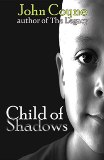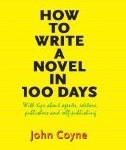Novel Writing 101–Point of View # 2
Novel Writing 101
This short series of blogs will be on writing your novel. All of you who were smart enough to major in business or international affairs or science while in college now have a chance to take an on-line creative writing course. If you are thinking of writing a novel, here’s a quick course (for no credits) on how you might go about writing your book.
Point of View
Welcome back to Novel Writing 101
I want to talk about the Point of View for your Novel.
“Point of view” is a term that refers to the relationships between the storyteller-you–the story, and the reader. A story can be told basically from three different points of view – first person, second person or third person.
Many writers are inclined to have a narrator tells his or her own story in the first person. Think of J. D. Salinger’s The Catcher in the Rye, for example. Or a first-person storyteller can also tell someone else’s story, as did Nick Caraway in F. Scott Fitzgerald’s The Great Gatsby.
Other writers use the third-person point of view. There are various kinds of third-person narrators. Two examples are:
• An omniscient storyteller who goes everywhere, knows everything, reveals what is in the minds of the characters, and comments on what the character wants. A good example of this technique is Mary Gordon’s novel, The Other Side.
• Another way to tell your story is a point of the view of a direct observer. A Director Observer has no memory of the past, and no special understanding of the present. The direct observer is like a reporter in the room recording the scene. This point of view is best used for a story that is all action and dialogue. For good examples, look at almost anything that Hemingway wrote.
Recently I read Jonathan Weisman (Philippines 1988-90) first novel No.4 Imperial Lane. He has one character telling his story from a first person point of view, then the other half of the novel is told from an omniscient point of view. Weisman pulls it off.
point of view, then the other half of the novel is told from an omniscient point of view. Weisman pulls it off.
It is possible to tell your story from the second person point of view, as in Jay McInerney’s Bright Lights, Big City—but the use of second person is rare in a noveI.
I would suggest that you use either the first person or the third-person omniscient where the author- you – knows everything about all your characters, including all their feelings, emotions and thoughts.
As a way to see the difference in how a writer approaches point of view, here’s what I have done in three of my novels.
My novel The Piercing, was set in western North Carolina, high in the hills. It was the first of my horror novels and as a writer what I needed to do was to set the scene, create the atmosphere of fear, and immediately transform the reader into another place and time and the horror that would be coming.
To achieve this, I used the omniscient view. Here is the opening of that novel:
The land was called The Hand of God for it seemed as if God himself had grabbed that remote corner of the southern state and rushed the terrain in his palm and fingers, shaping the valleys,the hollows, and the far mountains with his Almighty strength.
In the three golf novels I needed a first person, and the “I” of the story, would be the ‘caddie’ in the title. Each one of these novels is a totally different caddie who has a story to tell, and takes place in different time periods and places. All three of these novels, however, were told with a casual narrative without violence or tragic scenes.
What is true about first-person is that it draws the reader quickly into the narrative. As you tell the story using I, the reader is with you. This correction happens without the reader being aware of it.
For example, this is the opening of my novel The Caddie Who Played With Hickory.
As I’ve grown older I have come to realize that what is most important to me is not what I daily forget but what I remember. And what I recall from years ago comes back to me so intensely that I imagine I can reach back through time and distance and change with a few words, a gesture, or even a smile, the lives we all once lived.

Again-as you see–I have written my opening scene so the reader understands immediately who is involved and what the novel is about. The Opening reads this way.
As I’ve grown older I have come to realize that what is most important to me is not what I daily forget but what I remember. And what I recall from years ago comes back to me so intensely that I imagine I can reach back through time and distance and change with a few words, a gesture, ore even a smile, the lives we all once lived.
Now in my mystery novel, Child of Shadows, I set the scene and introduce the crime that has taken place, using the third person point of view.
Here is how that novel begins:

Detective Nick Kardatzke stepped carefully through the sewage water, the filth and garbage that had found their way into the tunnels under Grand Central Station. It was a cobweb world of intersecting and interchanging rails that disappeared into dozens of dark tunnels, vast switching yards that spread out under the city, in the midst of midtown Manhattan.
There are other points of view that can be used to tell a story, but for purposes of your first novel, let’s keep it simple. You can get creative with points of view on your next book, but let’s write this one first.
There is another aspect to point of view that you must decide now: Which of your characters is the viewpoint character?
You do have a way to move around in the telling of your story. In my family saga novel, Brothers & Sisters, there are six children and each one tells his or her story. I introduced them in the first chapter with short individual scenes-all in the third person, and, therefore, the reader understood immediately how I was telling the story. The use of the third person also allowed me to handle comfortably a large cast of characters.
Those are points of view in my novels. Each one gives a slightly different feeling to the novel.
Let’s do an experiment. Here is the opening few sentences of The Great Gatsby.
In my younger and more vulnerable years my father gave me some advice that I’ve been turning over in my mind ever since.
“Whenever you feel like criticizing anyone,” he told me, “just remember that all the people in this world haven’t had the advantages that you’ve had.”
Let’s change the point-of-view to the third-person. How does that read?
In his younger and more vulnerable years his father gave him some advice that he has been turning over in his mind ever since. “Whenever you feel like criticizing anyone,” he told him, “just remember that all the people in this world haven’t had the advantages that you’ve had.”
You’ll notice that the Fitzgerald “I” has a friendlier feel that it is warmer and more immediate and it sets the tone for the novel which, of course, Fitzgerald wanted.
Finally, try this-
Take a look at the first paragraphs of your novel. Write the same sentences from another point of view and see what point of view works best. What feels better for you to tell your story? Go with that feeling.
For a long and fuller presentation, you might want to go to www.skillshare.com and check out my video How To Write A Novel In 100 Days.

No comments yet.
Add your comment